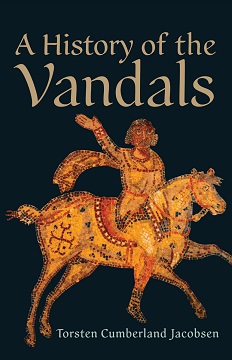
A History of the Vandals
Torsten Cumberland Jacobsen
360 pages, including index
published in 2012
Of all the Germanic tribes invading the Roman Empire, the Vandals have the worst reputation for reasons that have little to do with what they actually did. Mostly this is of course due to the simple fact that they lent their name to vandalism, coined in the wake of the French Revolution to describe the destruction of religious artworks by revolutionairies by equating it to the infamous sack of Rome in 455 CE, which in itself had already been exagerrated by pro-Roman historians for various political reasons. The Vandals then have never had an even break, always been the bogeyman to an Europe much more inclined to identify itself with the grandeur of Rome than with the ‘barbarians’ that ended its reign.
This attitude perhaps explains why books about the Vandals are rare in English, with A History of the Vandals being the first general history of them in English. Then again it could also be because unlike the Franks or Lombards or Goths, the Vandals had their largest impact outside of Europe, in the empire they created in North Africa and hence can’t be used as semi-mythical ancestor tribe for a modern European nation. This, as well as the fact that for a century they were the most successfull of the ‘barbarian’ successor states to the Roman Empire could also explain why they and not those Goths or Huns were used and abused as the villains in the Fall of the Roman Empire.
